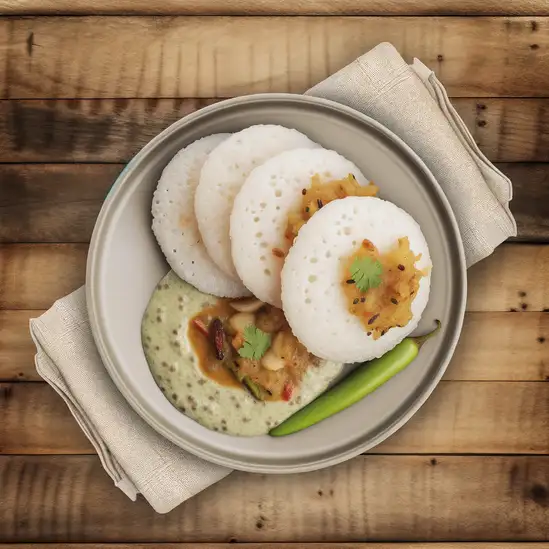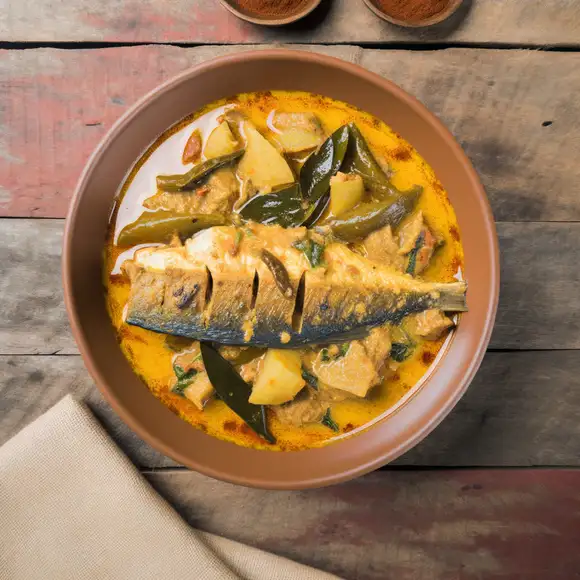



If you ever find yourself craving a place where spirituality and the sea blend effortlessly,Rameswaram is that rare spot that wraps you in a gentle,timeless embrace. As you wander through its sun-warmed streets,there’s a calm rhythm to the town—temple bells chiming softly,fishermen hauling in their catch,and the salty breeze carrying whispers of ancient stories. The air is tinged with the scent of jasmine and incense,mingling with the fresh ocean spray,creating a sensory tapestry that feels both grounding and uplifting. Rameswaram’s heart beats in its temples,especially the magnificent Ramanathaswamy Temple,where intricate corridors and sacred tanks invite quiet reflection. But beyond the spiritual,there’s a vibrant local life—colorful markets bursting with fresh spices,handwoven fabrics,and the chatter of friendly vendors eager to share a smile or a story. Don’t miss tasting the local flavors:crispy dosas,sweet coconut chutneys,and freshly caught seafood that tastes like the sea itself. What makes Rameswaram truly unforgettable is its unique blend of devotion and nature. Just a short ride away,the pristine beaches stretch endlessly,where you can watch the sun dip below the horizon,painting the sky in fiery hues. It’s a place where every moment feels like a quiet celebration of life’s simple,profound beauty. Trust me,once you’ve felt Rameswaram’s gentle pulse,it stays with you long after you leave.
The information on this page is currently being reviewed by Tripkliq and should be used as a guide only
Eng word: Hello
Eng pronunciation: Vanakkam
Local language: வணக்கம்
Eng word: Goodbye
Eng pronunciation: Priyavidai
Local language: பிரியாவிடை
Eng word: Thank you
Eng pronunciation: Nandri
Local language: நன்றி
Eng word: How much
Eng pronunciation: Evvalavu
Local language: எவ்வளவு
Eng word: Toilet
Eng pronunciation: Kazhipparai
Local language: கழிப்பறை
Eng word: Help me
Eng pronunciation: Enakku Udhavungal
Local language: எனக்கு உதவுங்கள்
Eng word: Yes
Eng pronunciation: Aam
Local language: ஆம்
Eng word: No
Eng pronunciation: Illai
Local language: இல்லை
Eng word: Excuse me
Eng pronunciation: Mannikkavum
Local language: மன்னிக்கவும்
Rameswaram is significant in the Hindu epic Ramayana as the place from where Lord Rama built a bridge across the sea to Lanka to rescue his wife Sita from the demon king Ravana.
Opened in 1914, the Pamban Bridge is India's first sea bridge and was the longest sea bridge in India until the opening of the Bandra-Worli Sea Link in 2010. It connects Rameswaram on Pamban Island to mainland India.
The Ramanathaswamy Temple in Rameswaram is renowned for its magnificent corridors, the longest in the world. The temple, dedicated to Lord Shiva, is a masterpiece of Dravidian architecture.
Rameswaram is one of the four Char Dham pilgrimage sites in India. The Char Dhams are considered the most sacred sites for Hindus, and a visit to these sites is believed to achieve moksha (liberation).
Agni Theertham is one of the 64 sacred baths in Rameswaram, visited by pilgrims who perform rites for their ancestors. It is considered very auspicious to take a dip in these holy waters.
Gandamadana Parvatham is a hill located on the island that is believed to house Lord Rama's footprints on a chakra. Visitors often climb this hill to view the footprints and enjoy panoramic views of the island.
Jatayu Tirtham is a sacred spot dedicated to the divine bird Jatayu, who fought valiantly with Ravana while he was abducting Sita. This place stands as a symbol of Jatayu's loyalty and bravery.
Dhanushkodi, at the southeastern tip of Pamban Island, was destroyed in the 1964 cyclone and has since remained uninhabited. It is renowned for its natural beauty and the mythological significance of being the starting point of Rama's bridge.
Adam's Bridge, also known as Rama's Bridge, is a chain of limestone shoals between Pamban Island and Sri Lanka. Geological evidence suggests that this bridge was a former land connection between India and Sri Lanka.
In Rameswaram, the most common Power Adaptor is Type C, Type D.



A thin, crispy crepe made from fermented rice and lentil batter, often served with various chutneys and sambar.

Steamed rice cakes that are soft and fluffy, typically served with coconut chutney and sambar, a lentil-based vegetable stew.

A comforting dish made from rice and lentils, cooked with black pepper, cumin, and ghee, often garnished with cashews and curry leaves.

A spicy and tangy curry made with fresh fish, coconut milk, and a blend of local spices, reflecting the coastal flavors of Rameswaram.

A tangy and spicy soup made from tamarind, tomatoes, and a variety of spices, often enjoyed with rice.

A savory snack made from boiled chickpeas or lentils, seasoned with mustard seeds, curry leaves, and coconut.

A fragrant rice dish cooked with marinated seafood, spices, and herbs, offering a unique twist on the traditional biryani.

A refreshing condiment made from grated coconut, green chilies, and spices, commonly served with South Indian dishes.
Known as the southernmost tip of India,Kanyakumari is famous for its stunning sunrise and sunset views over the ocean,the Vivekananda Rock Memorial,and its serene beaches.
ExploreIf you ever find yourself wandering through the heart of Tamil Nadu,Madurai is a city that grabs you with its vibrant pulse and timeless spirit. The moment you step into its bustling streets,you’re wrapped in a tapestry of colors and sounds—the rhythmic clang of temple bells,the chatter of vendors selling jasmine garlands,and the scent of sizzling street food mingling with incense. It’s a place where ancient traditions live side by side with everyday life,creating an atmosphere that feels both sacred and warmly familiar.
Madurai’s soul is anchored by the Meenakshi Amman Temple,a sprawling marvel that feels like stepping into a living painting. The intricate carvings and towering gopurams are mesmerizing,but what really stays with you is the hum of devotion and the gentle chaos of pilgrims and locals moving through the temple’s courtyards. Outside,the city’s markets burst with spices,silk,and vibrant textiles,inviting you to slow down and savor the sensory overload.
What I love most about Madurai is how it invites you to taste its stories—literally. From steaming idlis and spicy chutneys at a roadside stall to the sweet,milky filter coffee that feels like a warm hug,every bite connects you to the city’s rich heritage. Madurai isn’t just a place to visit; it’s a place to feel alive,where every corner holds a story waiting to be discovered.
If you ever find yourself wandering through the southern tip of India,Thiruvananthapuram will wrap around you like a warm,familiar hug. The city hums with a gentle rhythm—part ancient tradition,part vibrant modern life—that instantly makes you feel at home. Imagine walking along streets lined with swaying coconut palms,the salty breeze from the nearby Arabian Sea mingling with the rich aroma of spices and jasmine wafting from bustling markets. It’s a place where temple bells chime softly in the morning,blending seamlessly with the chatter of locals and the distant crash of waves.
What’s truly captivating about Thiruvananthapuram is its effortless balance between calm and energy. You can spend your mornings exploring the majestic Padmanabhaswamy Temple,its intricate carvings telling stories centuries old,then lose yourself in the colorful chaos of Chalai Market,where vendors call out,selling everything from fresh mangoes to handwoven fabrics. The city’s soul is deeply rooted in its culture—classical dance performances,traditional Kerala cuisine bursting with coconut and curry leaves,and the warm smiles of people who take pride in their heritage.
Evenings here are magical. Head to the nearby Kovalam Beach,where the sun dips low,painting the sky in hues of orange and pink,and the sound of waves lapping against the shore feels like nature’s lullaby. Whether you’re savoring a plate of spicy fish curry or simply sitting by the shore,Thiruvananthapuram invites you to slow down,breathe deeply,and soak in a world that’s both timeless and alive.
A coastal city with a blend of modernity and history,Kochi is famous for its backwaters,Fort Kochi,Chinese fishing nets,and nearby islands like Vypin and Willingdon.
ExploreIf you ever find yourself craving a place where the ocean breeze carries stories of adventure and the rhythm of waves sets your pace,Port Blair is where you want to be. This city feels like a gentle invitation to slow down and soak in the raw beauty of island life. The moment you step off the ferry or plane,the salty air mingled with the scent of tropical flowers wraps around you like a warm hug. Palm trees sway lazily against a backdrop of turquoise waters,and the chatter of locals blends with the distant call of seabirds,creating a soundtrack that’s both lively and soothing.
Port Blair isn’t just a gateway to the Andaman Islands; it’s a place where history whispers through the walls of the Cellular Jail,a somber yet inspiring reminder of India’s past. But beyond its historical weight,the city pulses with a laid-back charm—colorful markets burst with fresh seafood,exotic fruits,and spices that tease your senses. Grab a plate of freshly caught fish grilled with local herbs,and you’ll taste the ocean’s essence in every bite.
What makes Port Blair truly special is its blend of cultures and the warmth of its people. You’ll find a mix of indigenous traditions and influences from across India,all coexisting in a relaxed,welcoming vibe. Whether you’re wandering along Corbyn’s Cove Beach at sunset or chatting with fishermen mending their nets,there’s a genuine friendliness here that makes you feel like you belong. It’s a place that invites you to explore,reflect,and simply be.
A former French colony,Pondicherry is known for its charming streets,serene beaches,and the famous Auroville,making it a unique blend of culture and relaxation.
ExploreSome touts may lure tourists to substandard hotels or lodges, claiming they are the best or closest to the temple, and take a commission from the hotel owners.
Auto-rickshaw drivers may overcharge tourists, especially those unfamiliar with the local rates, by not using meters or taking longer routes.
Individuals dressed as holy men may offer blessings to tourists and then demand money in return, often intimidating them into paying.
Scammers may ask tourists for donations, claiming it is for temple maintenance or charity, but the money goes into their own pockets.
Some individuals pose as priests and offer to perform special rituals or blessings for tourists, charging exorbitant fees for these services.
Unlicensed guides may approach tourists, offering to show them around the temple or city, but they often provide inaccurate information and charge high fees.
Vendors near the temples may sell items like flowers, coconuts, and other offerings at inflated prices, targeting tourists unfamiliar with the actual costs.
Scammers may falsely claim that photography inside or around the temple requires a fee, even though it may not be true.
The use, possession, and trafficking of drugs are strictly prohibited in Rameswaram and across India under the Narcotic Drugs and Psychotropic Substances Act (NDPS) of 1985. Penalties for drug-related offenses can be severe, including long prison sentences and heavy fines. Tourists should avoid any involvement with illegal drugs to stay out of trouble.
In Rameswaram, as in the rest of India, smoking is prohibited in public places such as restaurants, hotels, public transport, and parks. The Cigarettes and Other Tobacco Products Act (COTPA) of 2003 regulates smoking in public places. Violators can be fined. Designated smoking areas may be available in some establishments, but it is always best to ask before lighting up.
Vaping is subject to similar regulations as smoking in India. The Indian government has imposed a ban on the production, import, sale, and advertisement of e-cigarettes and vaping products since September 2019. Tourists should avoid using or carrying vaping devices in Rameswaram to avoid legal issues.
What are other people saying about Rameswaram?
Recent Social posts about Rameswaram
There is nothing to show you for now.